On Tuesday 11 December, we spent most of the day at a large wildlife centre in nearby Norfolk. It was time in the midst of the stress of preparing to pack up and leave that we should have some ‘time out’ to visit a local wildfowl reserve.
Welney Nature Reserve is run by the Wildfowl and Wetlands Trust, and is a huge wetlands area in the fen land. Originally made as a flood plain for water drained from the fen area, it now also functions as an important habitat for many species of water bird.
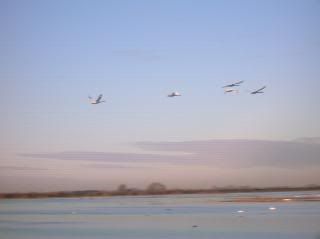
In summer, the area is largely grassland with intermittent pools; in winter, the area is mostly a lake. The reserve is well set up for both the birdwatcher and the casual observer, with walkways, hides and a large heated observation area (rather handy as temperatures plummet here).
There had been some minor flooding the day we visited, and only the main observation room and its wing hides were open. The walking tracks were submerged under mud and water. While this was a little disappointing, we managed to find lots of things to look at from the main hides.

As Frank W Harvey says in his famous poem Ducks:
From troubles of the world I turn to ducks,
Beautiful comical things
Sleeping or curled
Their heads beneath white wings
By water cool
So we arrived at Welney ready to be calmed and delighted by ducks - and of course swans. Welney is famous in the winter months for the thousands of swans which make this their home base. Around 2400 Bewick's swans and 2500 Whooper swans are currently in residence there, along with the Mute swan, the most well-known of the three breeds.
When we visited, there were many Mute swans and Whoopers present, but the shyer Bewick's swans had removed to a more remote part of the reserve, apparently due to the bullying of the larger Whoopers.
Our first stop was the north wing hide, at the side of the main observation room. As this is not heated, and the windows are open to allow for telescopes, the wing hides are not for the faint-hearted, and serious twitchers and wildlife photographers are their main occupants.
"And what are twitchers?" I hear you cry. In popular opinion, twitchers are small, daggy men in anoraks with high powered telescopes and binoculars draped around their persons. Their main habitats are RSPB and nature reserves and anywhere a rare bird might be spotted. Their hero is Bill Oddie.
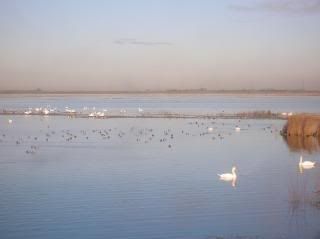
This description by Sean Coughlan of the BBC News Magazine sums up them up nicely:
"Like a flock descending unexpectedly from the skies, they appear in their thousands in out-of-the-way places, identifiable by long lenses, green-rainwear plumage and a steely determination to tick a name off a list."
(accessed on12/12/07 from http://news.bbc.co.uk/1/hi/magazine/6149998.stm)
Whilst not qualifying as twitchers, both of us were sufficiently interested in the feathered fowl to spend a while in the more open hide, and we took advantage of the telescope that was supplied by the reserve to start to identify the swans and other wildfowl.
Whoopers [above] need those larger wings, as they fly from Iceland to Scotland each winter, and their journey includes a non-stop 600 mile journey over the Atlantic Ocean. They are also well named, as the whoop to each other quite a lot! The air was resonant with the call of Whoopers by the time we left at 4.30pm.
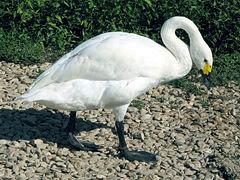
Bewick's swans [above] migrate each year from Siberia, but as they travel over land mass, the journey takes them longer than that of the Whoopers as they can stop for rests. They are the smallest of the swans, and the most rare.
Mute swans are one of the UK’s most common water birds, and can be seen all year round on canals, rivers, ponds and lakes. They mate for life once they breed, and we observed a lot of affectionate behaviour between the pairs of mute swans on the lake. (The next photo almost catches them at it!!)
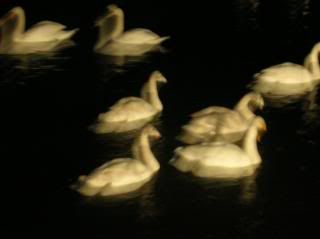
This sort of display never failed to raise a collective “aaaaaaaaaaaaahhhhhhhhh” in those present in the hide! There was a good reason for the drawn-out “aaahhh”, as the swans twined their long graceful necks around each other, gently rubbed their foreheads together, then placed their faces together. At this point, with their arched necks, they formed a heart shape between them. “Oh look,” cried a voice at this moment. “They are having some loving.”

Our faces frozen, we decided it was time to move to the warmth of the main observation room. The surface of the lake was alive with feathers, flashes of colour, and we could hear what we later realized was the call of the Whoopers.
Swans apart, there were many ducks for us to look at; although, at first it seemed like there were only Pochards and Mallards present on the water.
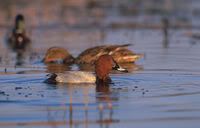
The Pochard ducks [above] looked very beautiful as they swam about in the sun, as they have shiny chestnut heads that contrast beautifully with their black breasts and grey backs. We only saw one female the whole time we were there – the other 100s of Pochards were all male! Apparently the females prefer to winter in sunny Spain, a very sensible decision given the icy temperatures at Welney.

Mallard ducks [above] are the most common duck on England’s waterways, and proved this by also appearing in abundance, especially near the scheduled feeding time.
It was some time before we realized that among the Pochard and Mallard, there were also some more exotic ducks. The room was fairly full by this time, and we were fortunate enough to be seated near an bird enthusiast, whose powerful telescope allowed him to spot many of the more unusual birds on the reserve. He was with a group of visiting senior citizens, and his verbal directions to them about where to look and what species they were looking at, meant that we could find them for ourselves, albeit with a much less powerful pair of binoculars.
These other ducks included Pintails, Wigeon and Teal.
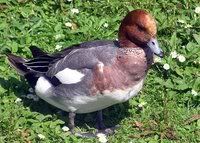
Wigeon ducks [above] like to stand under swans (or so it seemed to us) as they grazed or dozed.
Teal are quite colourful and attractive, with chestnut heads, speckled breasts and a green bandit’s mask across its eyes. They are Britain’s smallest duck. The Pintails could be distinguished by a characteristic stripe on their heads, and their long pin tail.
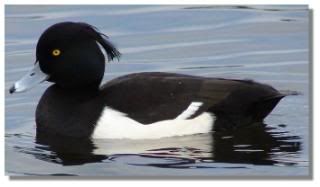
We were also fortunate enough to see a number of Tufted ducks [above], whose velvety black heads and oriental-style ponytails set them apart from the other wildfowl. The Tufted duck is the most common diving duck in Britain, and the ones we watched proved they were certainly accomplished at vanishing deep under the water.
Numerous Coots were also feeding on the lake, diving frequently for food, and jockeying for position with the larger birds as time for the feed grew near. A number of geese were also present, notably the Canada goose, which was originally introduced to Britain to grace the formal lakes in parklands and grand estates. As no one told this to the Canada Goose, it has managed to expand its habitat out into the wild areas of Britain, and its population continues to increase.
The Greylag goose [above] is another winter visitor to Britain, and they sat companionably with the swans on a narrow strip of land to the right of the observation room. Cormorants could be seen sunbaking in row on partly submerged fence posts off in the distance.
There were also lots of Lapwings [above] clustered together on the few parts of pasture still raised above the water. Every so often they became agitated and flighty, and clearly disturbed. Their fright and flight was soon explained by the occasional visits of a Marsh Harrier and a Merlin, both apparently intent on a Lapwing lunch.
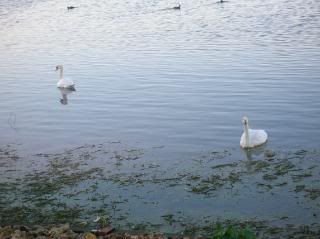
Almost as interesting as the birds were the conversations going on in the room. At on stage an indignant male voice was heard to exclaim, “Really, mother, what do you think they are out there? Budgerigars??? ” This sent a ripple of laughter through the room, though the context of this remark remains a mystery.
Another stir of excitement happened when everyone heard the exclamation of “Look, a rat!” and sure enough, there was a large grey rat swimming amongst the swans towards the shore. Questions something like “What is that grey bird over there?” “And how do you know that it is a cormorant?” “Why does that swan have his wings raised over his back?” could be heard through the room from time to time.
The highlight of the day for many who were there was the 3.30pm feed. During the winter months, the reserve supplements the diet of the wildfowl with regular grain feeds. Over an hour before the feed, the birds were already anticipating it, and jockeying for pole position with each other.

This was especially true of the swans, who raised their wings in aggressive postures, and bit the tails of other birds and chased them away. The smaller pochard and mallards were also heckled, but this appeared not to worry them.
By 3.30pm, the hide was filled with many people, from a group of young teenagers to the lunching pensioners group that had been there for some time. One of the staff had arrived by this time, and we were given a short talk on the birds. She then entered the water below with a floating barrow, and proceeded to distribute grain up and down the length of the hide. (That's her in the bottom left of the next photo.)
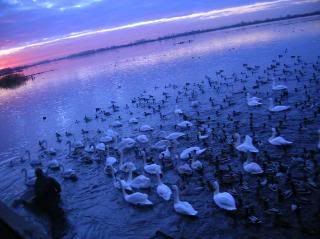
By now there seemed to 1000s of birds all chasing grain, including some of the shyer Wigeon and tufted ducks, and the one lone female Pochard mentioned earlier, all joined together in a colourful and noisy pageant on the lake. This was matched only by the colourful and noisy pageant that was now taking place in the hide, with necks craned towards the window and many comments being made about the excited birds.
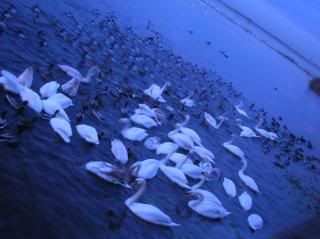
Well, time was getting, and it was getting dark (after all, it was almost a quarter to four!!). We were advised that soon the majority of the reserve’s swans would be returning to roost on the reserve, as they had been out feeding in the fields during the day (pictured below).
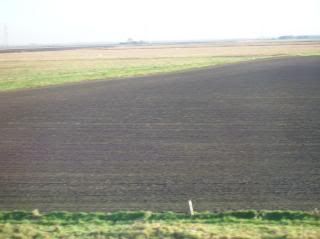
Swans apparently are partial to sugar beet and potato leftovers, supplemented by the odd beakful of winter grain. As we waited, the sun sank in a magnificent display of red and gold, and lights beneath the hide illuminated the water and the birds in front of us.
As it darkened, there were constant cries of “here they come”, as group after group of graceful Whoopers landed on the water in spectacular fashion [below].

Each family group then greeted each other with whoops of delight, affectionately rubbing necks and heads together. It was a sight well worth waiting for.
(We took lots of photos but not many of them were able to be used. The dusk shots often had multiple exposures, as seen above. We've only used the 'best' of these. Photos of individuals birds are copied from Wikipedia online encyclopaedia. The landing whooper swan is copied from http://www.wirralbirdclub.com/ and was taken at Martin Mere in November 2005. All were accessed on 12/12/07.)

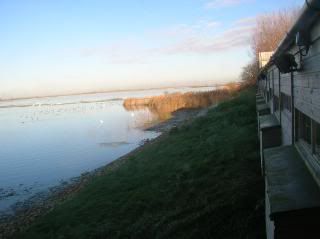
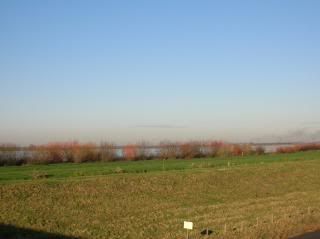

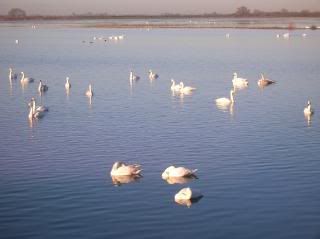
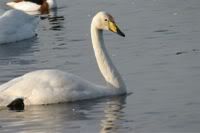
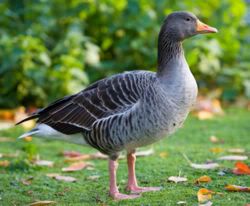
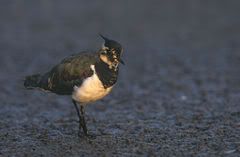


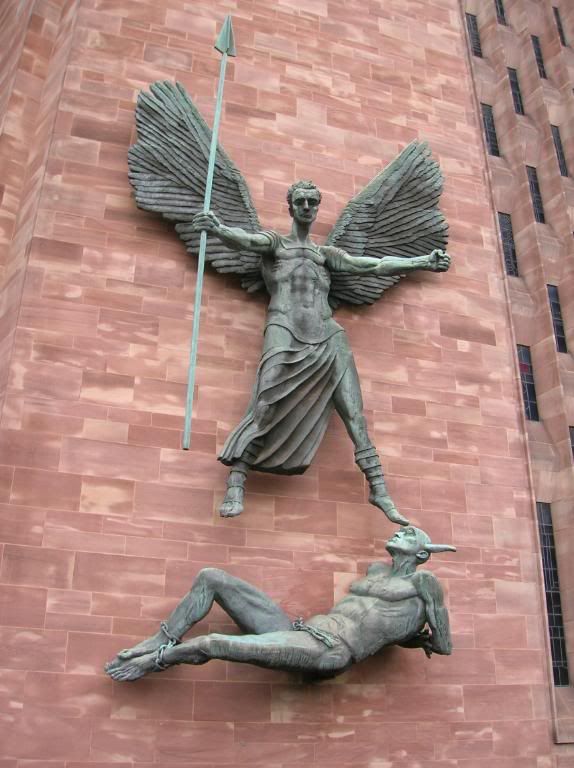

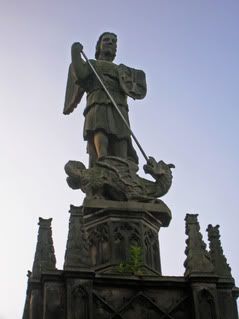
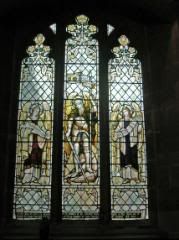
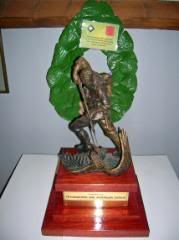
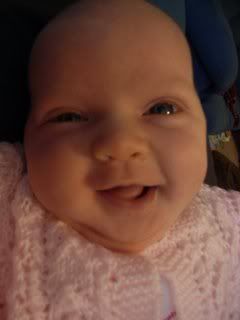
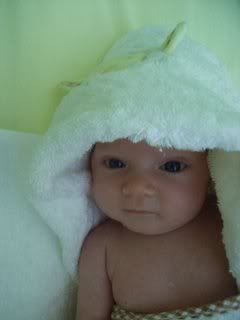
1 comment:
Can I have mine with hoisin sauce?
Actually, I love ducks (though not to eat) and this place looks very interesting. Great shots, as always.
Post a Comment